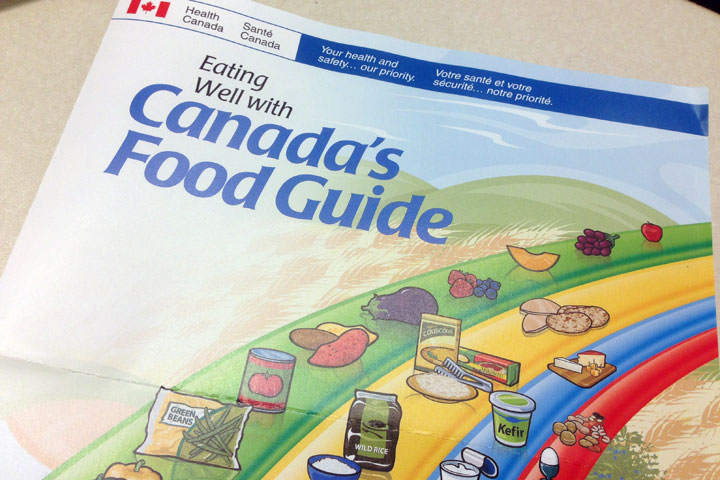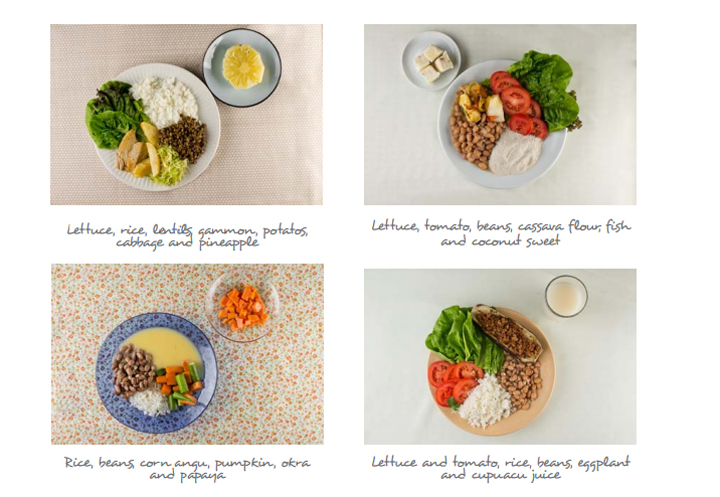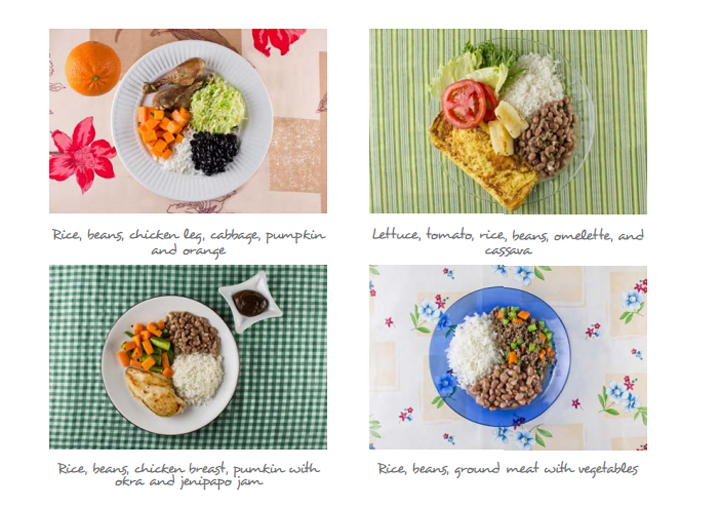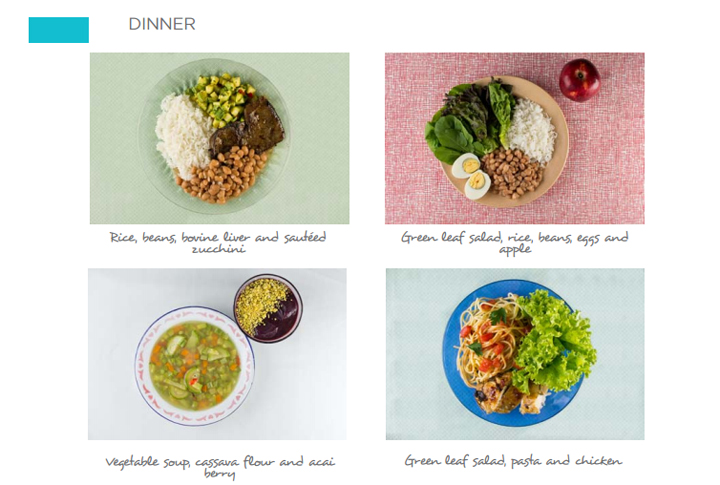What should you eat for breakfast? What about lunch and dinner? That’s the question Canada’s Food Guide attempts to answer.

The Guide – a colourful breakdown of what Canadians should be eating each day – is at its core, simple; eat X amount of servings of vegetables and fruit, grains, milk, and meats.
But it’s also complex; you can’t eat a loaf of white bread, and three blood-red steaks, while drinking cream and fruit juice all day.
You can’t eat whatever you want
The Food Guide’s goal, according to a Health Canada spokesperson, is to keep Canadians healthy and goes to some length – mostly a comprehensive website – to recommend healthier choices for Canadians.
“The Food Guide does state as well to consume fruit and vegetables more often than juice and to limit beverages and food that are high in calories, fat sodium, and sugar,” Health Canada’s Alfred Aziz said in an interview.
The Food Guide breaks down most foods into four categories – meat, grains, milk, vegetables and fruit, and their alternatives.
It suggests men between the age of 19 and 30, for example, eat three servings of meat or alternatives (like beans, eggs, or tofu) each day, eight to 10 servings of vegetables and fruit, eight grain products, and two milk products.
“So that would provide you with enough guidance to basically direct consumers and help consumers basically make healthier food choices and beverage choices,” said Aziz.
But you can’t just have a few servings of ground beef: the Guide advises people opt for lean meat and alternatives, and trim the visible fat from meat.
How the Food Guide is used
Canada’s Food Guide is used across the country by dietitians who use it as the base from which they build their own nutritional advice.
The organization differs from the food guide on some issues however, like juice.
“If you take the example of juice, Canada’s Food Guide suggests having vegetables and fruit more often than juice, but Dietitians of Canada goes further and says: Satisfy your thirst with water and choose whole fruit instead of juice,” said Kate Comeau, the manager of Public Relations and Media at the Dietitians of Canada.
READ MORE: Is the food guide out of date and out of touch?
The Food Guide isn’t set in stone. Health Canada reviews the science behind the recommendations as part of its “evidence review cycle.”
If the science has changed, then presumably, so will the recommendations. Health Canada would not say how often these reviews take place or what marks their completion other than to say they are “continuous.”
‘People don’t weigh and measure their food’
Health Canada’s website does include more general guidelines as well information on serving sizes. But the majority of space in the pamphlet is dedicated to servings.

Get weekly health news
But, as critics of the guide point out, most people don’t know that a serving of steak – according to the Food Guide – is only 2.5 ounces. Or, they simply don’t bother to look.
“People don’t weigh and measure their food. Most Canadians think a serving of steak is however much steak they put on their plate, not that they have to divide it into 50 or 75 gram portions,” Dr. Yoni Freedhoff said in an interview.
And Freedhoff warns that could lead to weight gain – which is, in part, determined by caloric intake.
“And the fact is, you look within the same food group and different servings of different foods will have different impacts calorically and that of course has different impacts on weight.
For example, a 2.5 ounce boneless chicken breast has approximately 115 calories. A 2.5 ounce serving of top blade steak is approximately 172 calories
Aziz suggested however that following the Food Guide – which uses “conservative” estimates on caloric requirements for sedentary people – won’t send people over their caloric limit
“So based on the nutrient needs of different age and sex groups, the Food Guide has been built so that to meet these nutrient needs, these people, based on the age and sex groups, would not exceed their caloric requirements,” he said
What could the Food Guide look like?
Cara Rosenbloom, a registered dietitian with Words to Eat By, thinks the Food Guide could be made simpler. Instead of focusing on a certain number of servings, Rosenbloom thinks people would be better served if the Guide used far more general rules like “the plate model.”
“Which means half of your plate should be filled with vegetables, a quarter of it with grain products and a quarter of it with protein,” she said. “And that’s a healthy way of looking at a plate no matter what age you are, no matter what gender you are – it’s a simplified way of looking at it.”
Health Canada released a new interactive tool and app Friday that – at least partially – mimics the “plate model” suggested by Rosenbloom.
The website allows people to hover over different parts of a plate and see how much of each food group they should eat. The tool strays from the serving suggestions listed in the Food Guide and suggests filling a certain portion of your plate with vegetables, grains, and meats instead.
Health Canada also released an app, My Food Guide, that allows people to pick and choose different foods which fit into each category. The app does however still rely on suggested servings.
The Brazilian food guide takes a much different approach than the Canadian guide and is being praised for it.
“There was recently a food guide out of Brazil, and it didn’t talk about portions or serving sizes. Instead, it reminded people to dine at home more often, to cook more often, to eat fewer processed foods – so bigger general guidelines, rather than looking at every morsel that goes on to your plate,” Rosenbloom said.
The Brazilian food guide places more autonomy in the hands of the cook and rather than providing a goal of recommended servings, delivers suggestions and rules to follow to eat a healthy diet.
The Brazilian food guide provides photos of traditional meals found around Brazil and goes into detail explaining why each one is good; minimal processed foods, diverse use of vegetables, and limiting red meats in favour of lean meats.
The entire Brazilian food guide can be boiled down to 10 tips that provide a more holistic approach to food:
- Make natural or minimally processed foods the basis of your diet
- Use oils, fats, salt and sugar in small amounts
- Limit the consumption of processed foods
- Avoid consumption of ultra-processed foods (soft drinks, for example)
- Eat regularly and carefully in appropriate environment and whenever possible, in company
- Shop in places that offer a variety of natural or minimally processed foods
- Develop, exercise and share cooking skills
- Plan your time to make food and eating important in your life
- Out of home, prefer places that serve freshly made meals
- Be wary of food advertising and marketing
Canada’s Food Guide website does include a lot of these same tips. The website also includes a detailed list of how to follow its recommendations while eating at a restaurant.
CONTINUE READING: Is Canada’s Food Guide unrealistic?
Ever wondered what it would be like to follow the Food Guide for a week? Wonder no more — we’re going to test it out and see what it’s like to eat according to Canada’s Food Guide.

























Comments